Top Sustainable Design Choices for Victorian Homes
- 04-08-24
- 6 min read
- Blog
Victorian homes are well-loved for many of their features, but unfortunately, sustainability and efficiency are not among them!
Today, we realise the value of building smart, more efficient homes that save money over time while maintaining a comfortable internal temperature and atmosphere.
That’s what we’re going to explore here. We’ll identify the common issues these properties face, the value of incorporating sustainable features, and specific areas where improvements can be made.
From insulation and windows to heating systems and solar energy, we'll provide insights into how homeowners can create extensions that are both respectful of heritage and fit for the future.
Victorian homes, while cherished for their character, present several challenges when it comes to modern living and energy efficiency:
Poor Insulation: The solid brick walls typical of Victorian construction offer little in the way of thermal insulation. This, combined with uninsulated roofs and floors, leads to significant heat loss and high energy bills.
Single-Glazed Windows: Original Victorian windows, while charming, are often single-glazed and poorly fitted, resulting in considerable heat loss and drafts.
Inefficient Heating Systems: Many Victorian homes still rely on outdated heating systems, which can be inefficient and expensive.
Damp and Condensation: Poor ventilation, coupled with cold surfaces due to inadequate insulation, can lead to damp and mould problems.
Limited Natural Light: The typical Victorian layout of smaller, separate rooms can result in dark interiors, particularly in the middle rooms of terraced houses.
Restricted Layout: While charming, the traditional room layout of Victorian homes may not suit modern preferences for open-plan living.
Chimney Stacks: While a beloved feature, chimney stacks can be a significant source of heat loss if not properly addressed.
Suspended Timber Floors: These can be a source of drafts and heat loss if not properly insulated.
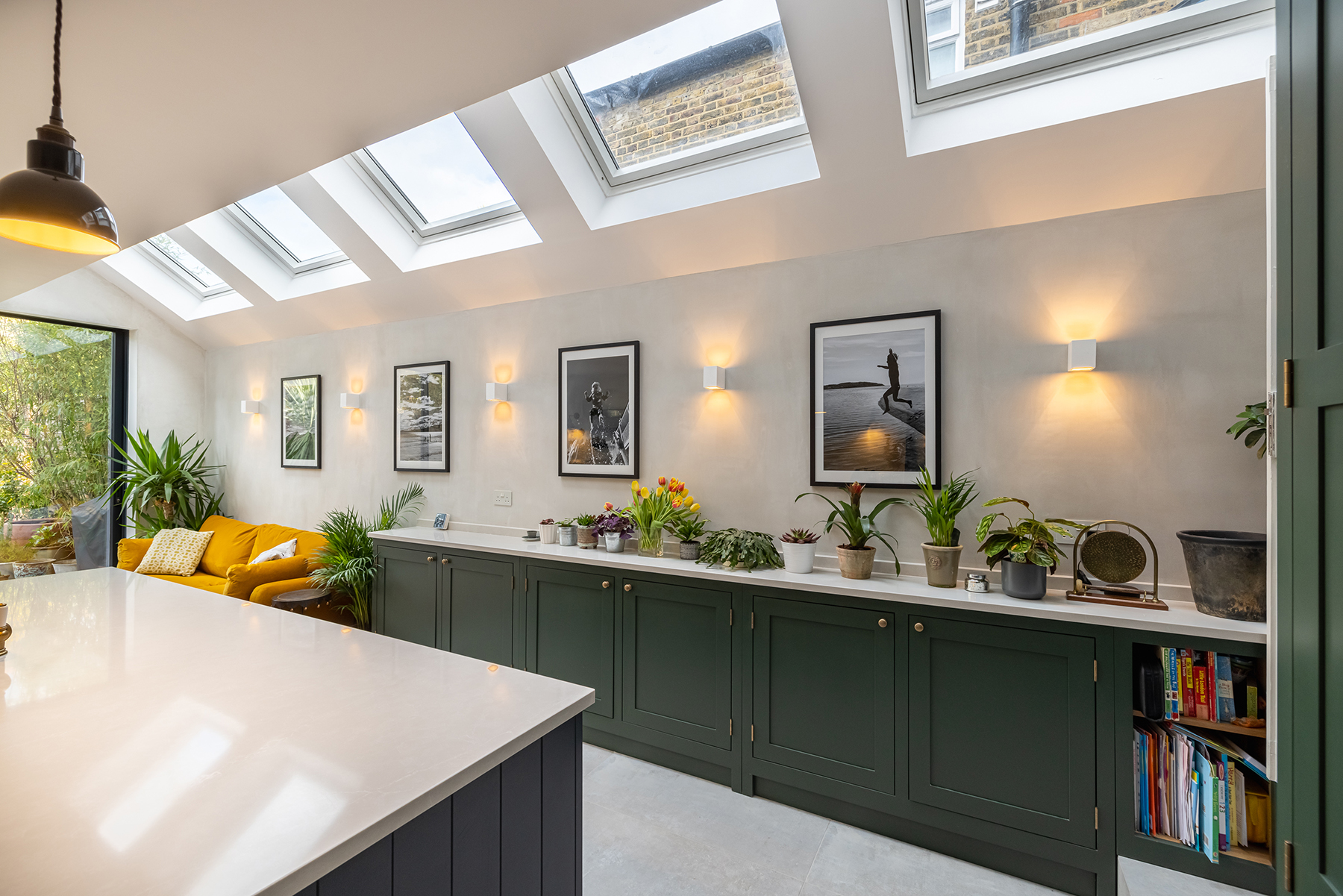
Above: With modern upgrades, Victorian properties can be exceptionally energy efficient and, by extension, more valuable.
Understanding these issues is crucial when planning a sustainable extension, as it allows us to address these problems effectively while respecting the home's heritage.
Incorporating sustainability into Victorian home extensions offers numerous benefits, both to the homeowner and the wider environment:
Energy Cost Savings: Perhaps the most immediate and tangible benefit is the reduction in energy bills. A well-designed sustainable extension and improvements to the existing structure can cut energy costs by 40-60%. A typical household spending £1,200 annually on energy could mean savings of £480 to £720 per year.
Increased Comfort: Better insulation, efficient heating, and improved natural light create a more comfortable living environment. This means warmer rooms in winter, cooler spaces in summer, and a more pleasant atmosphere year-round.
Reduced Carbon Footprint: Energy-efficient homes contribute to lowering overall carbon emissions. A typical sustainable extension can reduce a home's carbon footprint by 1-2 tonnes per year. To put this in perspective, the average UK household produces about 6 tonnes of CO2 annually from energy use.
Improved Health: Better ventilation and temperature control can improve indoor air quality and reduce damp issues. This can have health benefits, particularly for those with allergies or respiratory conditions like asthma.
Enhanced Property Value: Energy-efficient homes with modern extensions can command a premium in the property market. Studies suggest highly energy-efficient properties are worth some 5-10% over their less efficient counterparts and tell to sell much quicker.
Future-Proofing: As energy prices rise and regulations tighten, sustainable homes will become increasingly valuable and desirable. The government's commitment to net zero emissions by 2050 is likely to drive further incentives for energy-efficient homes.
Preservation of Character: By extending sustainably, homeowners can create modern, efficient living spaces while preserving and enhancing the character of their Victorian homes.
Reduced Maintenance: Many sustainable technologies and materials require less maintenance over time, potentially saving homeowners money and effort in the long run.
By investing in sustainability, homeowners benefit themselves and contribute to wider efforts to reduce energy consumption and combat climate change.
Improving insulation is often the most effective way to enhance the energy efficiency of Victorian homes.
Here are key areas to focus on:
The loft space is often the easiest and most cost-effective area to insulate. Aim for at least 270mm of insulation.
This can cost around £300-£400 for a typical house and save up to £150 annually on heating bills.
Options include mineral wool, sheep's wool, or recycled plastic bottles. Ensure adequate ventilation is maintained to prevent condensation issues.
For the extension, use high-performance insulation in the cavity of new walls. Materials like aerogel or PIR boards offer good thermal performance with minimal thickness.
For suspended timber floors, install insulation between joists. This can cost £300-£750 per room but significantly reduces heat loss and eliminates drafts.
Options include mineral wool, sheep's wool, or spray foam insulation. Consider underfloor insulation beneath a screed layer for solid floors in the extension.
Use brush seals or rubber strips around doors and windows. This simple measure, costing around £20 per window or door, can reduce heat loss by up to 15%.
Remember to address other draft sources like letterboxes, chimneys, keyholes, and gaps in floorboards. For unused chimneys, consider a chimney balloon or full insulation. This can prevent significant heat loss through the chimney stack.
When insulating a Victorian home, it's crucial to consider moisture movement through the building fabric. Use breathable materials where possible to prevent trapping moisture and causing damp issues.
Always consult a professional to ensure the insulation strategy is appropriate for your property.
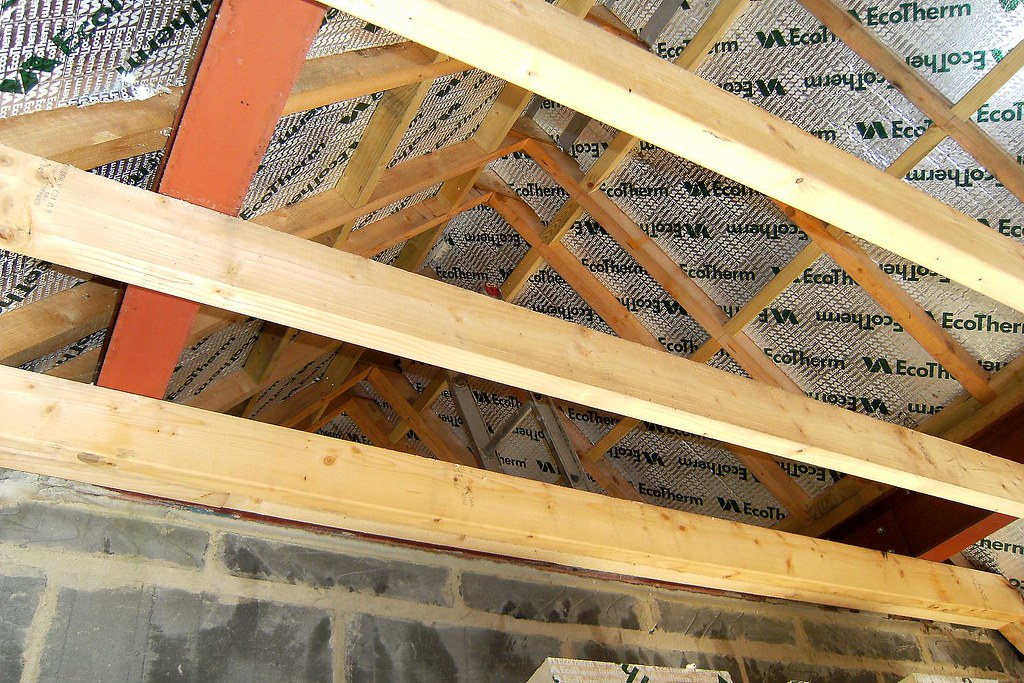
Above: Heat loss through the roof can be a major issue in period properties. Roof insulation is an effective solution.
Windows are a defining feature of Victorian homes, but they can also be a major source of heat loss. Here's how to address this:
Secondary Glazing: Secondary glazing is an excellent option for homes where original sash windows must be retained (e.g., in conservation areas). This involves installing a second pane of glass on the room side of the existing window. It can reduce heat loss by up to 60% while preserving the original windows.
Double or Triple Glazing: For the extension and where permissible in the existing house, install high-performance double or triple-glazed windows. Modern units can achieve U-values as low as 1.4 W/m²K for double glazing and 0.8 W/m²K for triple glazing. Expect to pay £500-£1,000 per window for good quality double glazing, and 10-15% more for triple glazing.
Slim-Profile Double Glazing: For a more authentic look, consider slim-profile double-glazing units designed to fit into existing Victorian window frames. While more expensive than standard units, they offer a good compromise between efficiency and aesthetics.
Restoration and Draught-Proofing: If replacing windows isn't an option, restore existing windows and add draught-proofing measures. This can include replacing damaged putty, fixing loose panes, and adding brush seals to sashes. While less effective than full replacement, it can still significantly improve comfort and efficiency.
Thermal Curtains or Shutters: In addition to improving the windows themselves, consider using heavy thermal curtains or reinstating traditional wooden shutters. These can provide an additional layer of insulation, particularly at night.
Low-E Glass: Opt for low-emissivity (low-E) glass when selecting new glazing. This microscopically thin coating reflects heat back into the room while allowing sunlight to pass through.
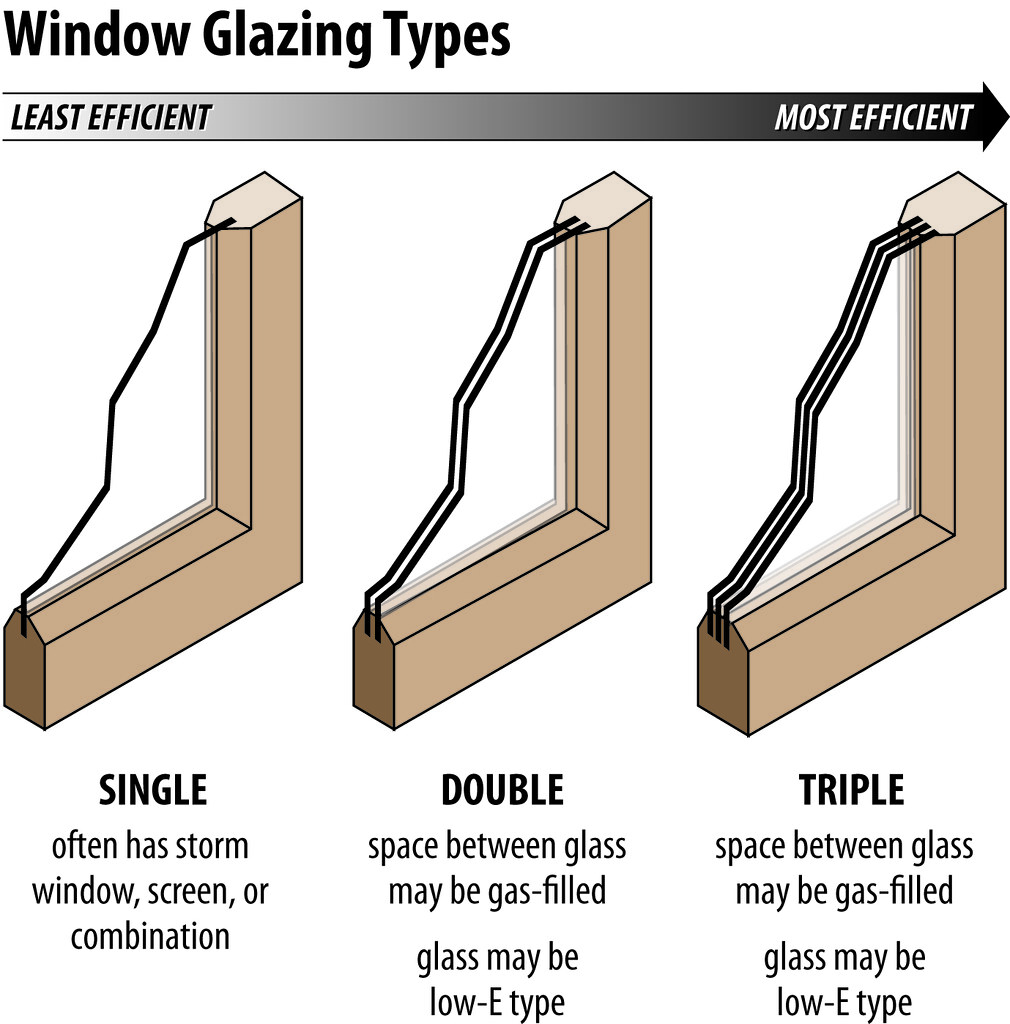
Above: Extending your home offers an excellent opportunity to invest in double or triple glazing.
Remember, any changes to windows in a listed building or conservation area may require planning permission.
Always check with your local planning authority before proceeding with window replacements or alterations.
Upgrading heating systems can dramatically improve both comfort and energy efficiency in Victorian homes:
High-Efficiency Boilers: Replace old boilers with modern condensing models. These can achieve 92-94% efficiency ratings, compared to 70-80% for older models. While costing £2,000-£3,000 to install, they can save up to £300 annually on heating bills. Consider a combi boiler to eliminate the need for a separate hot water tank.
Smart Heating Controls: Install smart thermostats and thermostatic radiator valves (TRVs). These allow for more precise control over heating, potentially reducing energy use by 15-20%.
Underfloor Heating: For the extension, consider water-based underfloor heating. While more expensive initially (£20-£40 per square metre plus installation), it provides efficient, comfortable heat and frees up wall space. It works particularly well with heat pumps and in well-insulated spaces.
Heat Pumps: Air-source heat pumps can be a good option for well-insulated extensions. While expensive, they can significantly reduce carbon emissions and running costs, especially when combined with underfloor heating. They extract heat from the outside air, even at low temperatures, and can be three times more efficient than a gas boiler.
Improved Radiators: In the existing parts of the house, consider replacing old radiators with more efficient models. Look for those with a larger surface area for better heat distribution. Adding radiator reflector panels behind radiators on external walls can also help reduce heat loss.
Zoned Heating: Implement a zoned heating system that allows different areas of the house to be heated to different temperatures at different times. This is particularly useful when combining an efficient new extension with an older part of the house.

Above: Replacing an old traditional boiler system with a combi boiler can cut a large percentage of your annual energy bills.
When upgrading heating systems, it's important to consider the house as a whole. A heating system that's too powerful for a well-insulated home can be inefficient, while an underpowered system will struggle to provide comfort in a poorly insulated space.
Extending a Victorian home sustainably means preserving historical character while improving energy efficiency and creating a beautiful, functional space.
By upgrading insulation, windows, heating systems, and solar energy, it's possible to significantly improve the performance of these beautiful old homes while respecting their heritage.
Always consult with professionals who have experience working with period properties to ensure any changes are appropriate and effective.
Design Team are highly experienced in sympathetically modernising Victorian homes, infusing them with modern features that bring them into the 21st century.
Contact us here to learn more.
Book a free Design Consultation with one of our team to discuss your project in more detail.
.jpg)
11-11-24 6
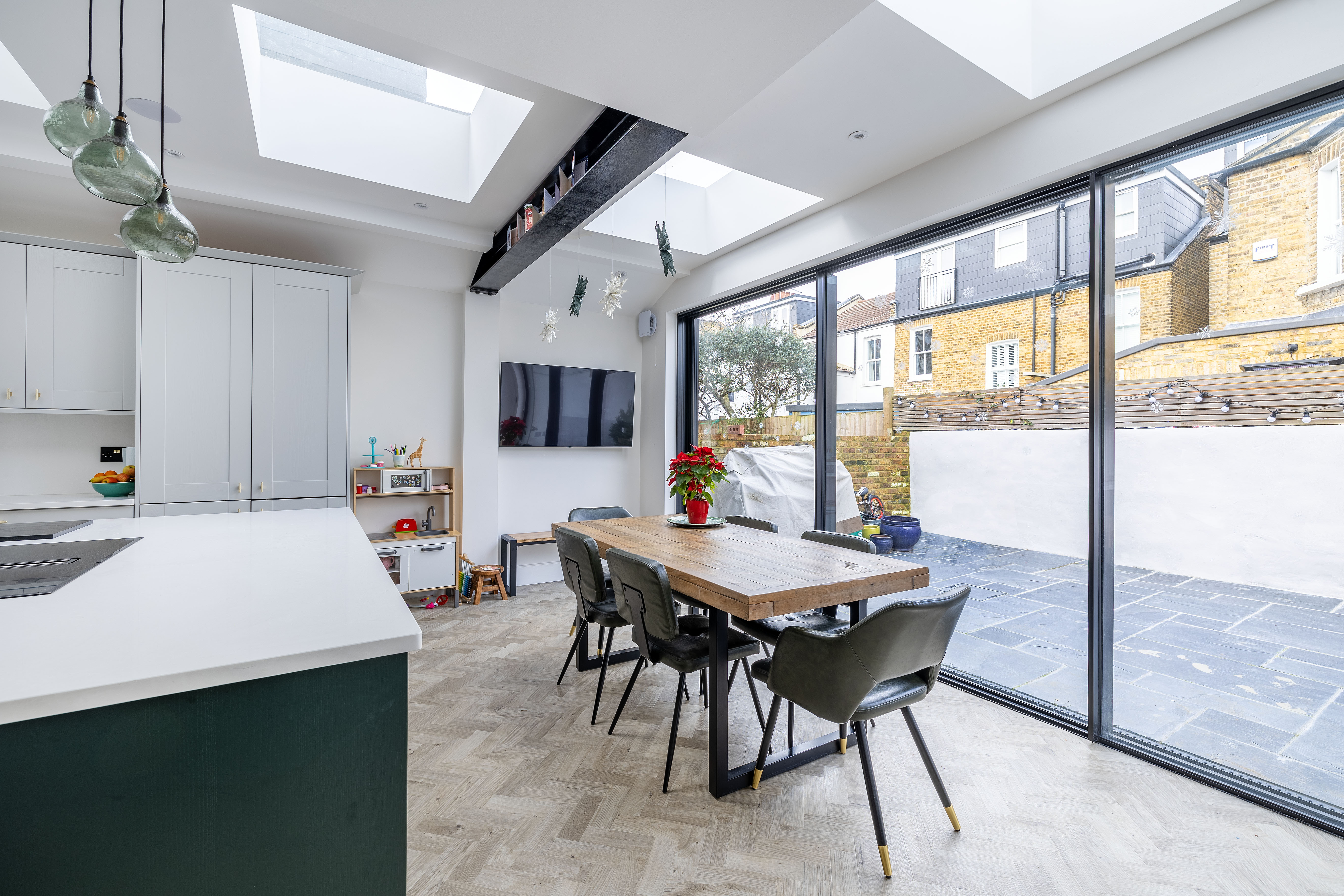
10-11-24 6
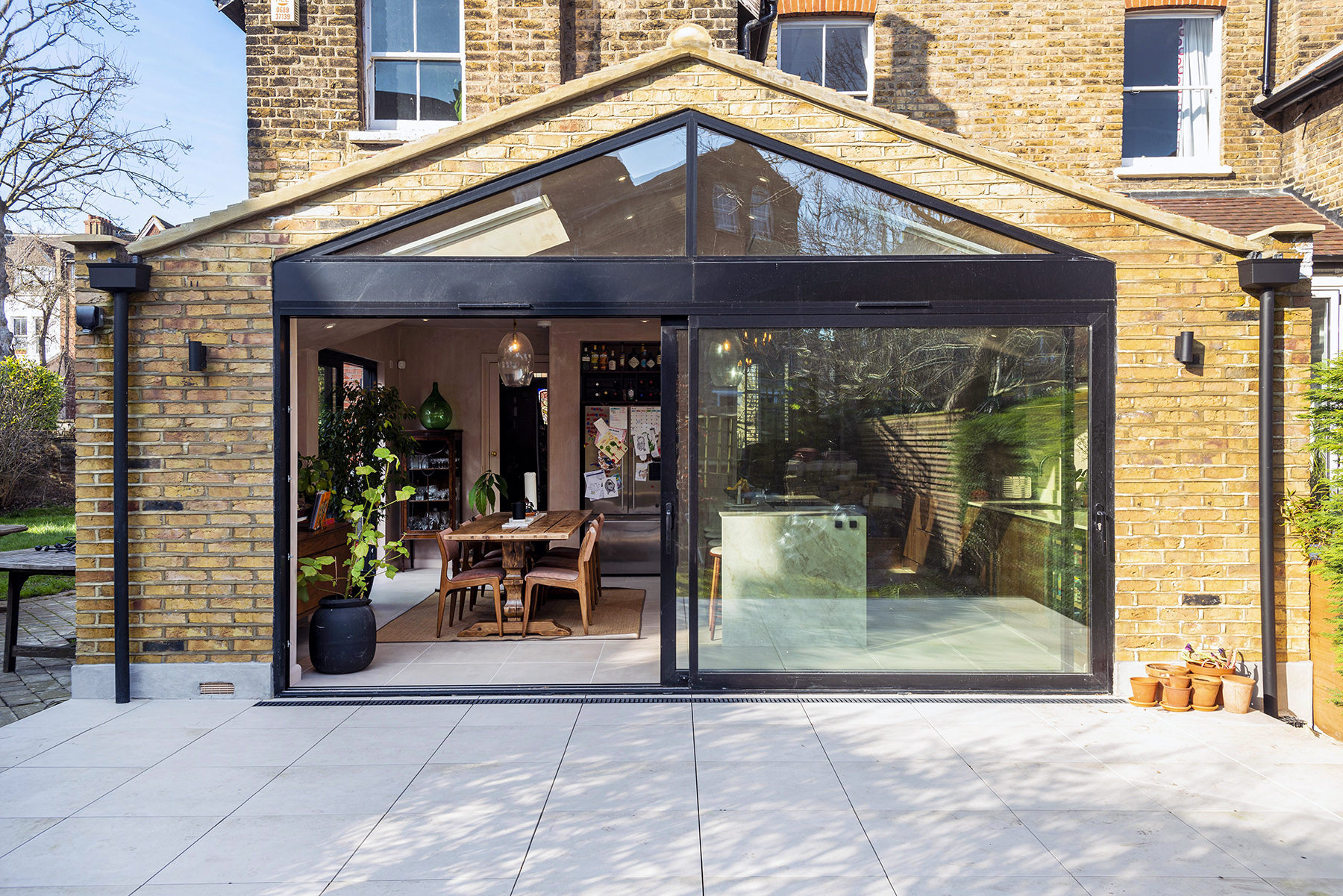
25-10-24 6